Low level exposure to monomethyl arsonous acid-induced the over-production of inflammation-related cytokines and the activation of cell signals associated with tumor progression in a urothelial cell model
- PMID: 20045430
- PMCID: PMC2846965
- DOI: 10.1016/j.taap.2009.12.029
Low level exposure to monomethyl arsonous acid-induced the over-production of inflammation-related cytokines and the activation of cell signals associated with tumor progression in a urothelial cell model
Abstract
Human bladder cancer has been associated with chronic exposure to arsenic. Chronic exposure of an immortalized non-tumorigenic urothelial cell line (UROtsa cells) to arsenicals has transformed these cells to a malignant phenotype, but the involved mechanisms are not fully understood. Chronic inflammation has been linked with cancer development mainly because many pro-inflammatory cytokines, growth factors as well as angiogenic chemokines have been found in tumors. In this study the chronology of inflammatory cytokines production was profiled in UROtsa cells chronically exposed to the toxic arsenic metabolite, monomethylarsonous acid [50 nM MMA(III)] to know the role of inflammation in cell transformation. Acute 50 nM MMA(III) exposure induced over-production of many pro-inflammatory cytokines as soon as 12 h after acute exposure. The same cytokines remain over-regulated after chronic exposure to 50 nM MMA(III), especially after 3 mo exposure. At 3 mo exposure the sustained production of cytokines like IL-1, IL-6, IL-8 and TNF is coincident with the appearance of characteristics associated with cell transformation seen in other arsenic-UROtsa studies. The sustained and increased activation of NFkappaB and c-Jun is also present along the transformation process and the phosphorylated proteins p38 MAPK and ERK 1/2 are increased also through the time line. Taken together these results support the notion that chronic inflammation is associated within MMA(III)-induced cell transformation and may act as a promoting factor in UROtsa cell transformation.
Copyright 2009 Elsevier Inc. All rights reserved.
Figures
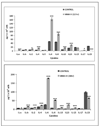


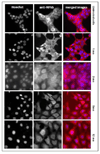

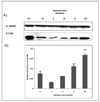
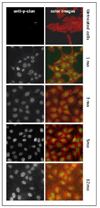
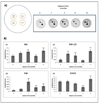


References
-
- Aguirre-Bañuelos P, Escudero-Lourdes C, Sanchez-Peña LC, Del Razo LM, Perez-Urizar JT. Inorganic arsenic exposure affects pain behavior and inflammatory response in rat. Toxicol Appl Pharmacol. 2008;229(3):374–85. 15. - PubMed
-
- American Cancer Society. Cancer Facts and Figures 2009. Atlanta, (GA): American Cancer Society; 2009.
-
- Ariztia EV, Lee CJ, Gogoi R, Fishman DA. The tumor microenvironment: key to early detection. Crit Rev Clin Lab Sci. 2006;43(5–6):393–425. - PubMed
-
- Baan R, Straif K, Grosse Y, Secretan B, El Ghissassi F, Bouvard V, Benbrahim-Tallaa L, Cogliano V. Carcinogenicity of some aromatic amines, organic dyes, and related exposures. Lancet Oncol. 2008;9(4):322–3. - PubMed
-
- Balkwill F, Mantovani A. Inflammation and cancer: back to Virchow? Lancet. 2001;357(9255):539–45. 17. - PubMed
Publication types
MeSH terms
Substances
Grants and funding
LinkOut - more resources
Full Text Sources
Miscellaneous

